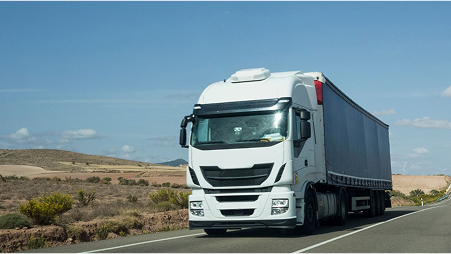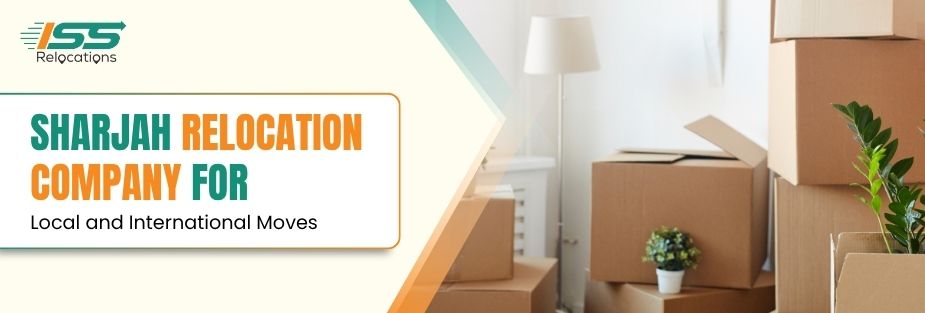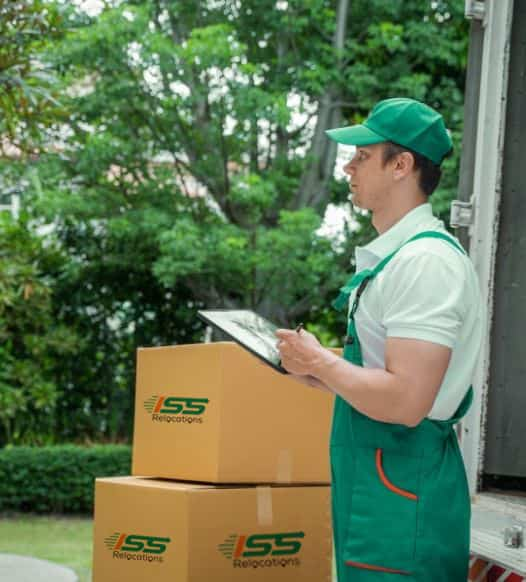
Overcoming Common Challenges of Office Moves: Solutions and Best Practices
An office move, also known as a business relocation, refers to the process of moving a company’s physical location from one place to another. It can be a daunting task, especially if it’s not properly planned and executed. Proper planning and execution of an office move are crucial to minimize disruptions to business operations and ensure a smooth transition to the new location. In this blog, we’ll discuss the importance of proper planning and execution of office moves, common challenges of office moves, and solutions, best practices for a successful office move, and the role of ISS Relocations in ensuring a hassle-free relocation.
Worried About Your Move?
Find helpful ways to manage challenges during relocation
Preparing for an Office Move
A. Establishing a timeline
The first step in preparing for an office move is to establish a timeline. The timeline should include all the necessary steps, from the initial planning phase to the actual move, and the post-move phase. It’s essential to create a realistic timeline that takes into account all the necessary activities, including the packing, loading, transportation, and unpacking of equipment, furniture, and other items.
B. Assigning responsibilities
Assigning responsibilities to employees is essential in preparing for an office move. It’s essential to identify and assign tasks to specific individuals or teams to ensure that the move is well-organized and executed efficiently. Each team member should be aware of their roles and responsibilities and have clear instructions on what needs to be done.
C. Communicating with employees
Communicating with employees is essential in preparing for an office move. Employees should be informed of the move well in advance to prepare for any changes that may occur. It’s also essential to communicate the reasons for the move and the expected benefits to employees to ensure buy-in.
D. Conducting a needs assessment
A needs assessment is necessary to identify the requirements of the new office space. It’s essential to assess the space requirements, the necessary equipment, and furniture to avoid issues such as inadequate space, misplacement of equipment, and damage to property.
E. Developing a detailed plan
Developing a detailed plan is essential in preparing for an office move. The plan should include all the necessary steps, from the initial planning phase to the actual move, and the post-move phase. The plan should be flexible and adaptable to any changes that may occur during the move.
Common Challenges and Solutions
A. Disruption to business operations
One of the most common challenges of office move is disruption to business operations. The move can cause disruptions that can affect the productivity and efficiency of employees. There are several solutions to this challenge, including:
- Implement temporary measures
Implementing temporary measures can help minimize disruptions to business operations. For example, setting up a temporary office space can help employees continue their work while the actual move is ongoing.
- Plan the move during off-peak periods
Planning the move during off-peak periods, such as holidays or weekends, can help minimize disruptions to business operations. This can also reduce the downtime required to move to the new location.
B. Damage to equipment and property
Another common challenge of an office move is damage to equipment and property. Moving delicate or heavy equipment can be risky, and it’s essential to take appropriate measures to avoid damage. There are several solutions to this challenge, including:
- Hire a reputable moving company
Hiring a reputable moving company can help avoid damage to equipment and property. The company should have adequate experience, knowledge, and equipment to handle the move professionally.
- Insure valuable items
Insuring valuable items can help protect them from damage during the move. The insurance should cover the replacement or repair costs of any damaged items.
C. Misplacement of important documents
Misplacing important documents can be frustrating and can cause delays in business operations. It’s important to have a system in place to ensure that all documents are accounted for during the move.
- Develop a labelling system
Labelling all boxes and items can help prevent misplacement of important documents. Each item should have a unique label that corresponds to a master inventory list. This list should contain details of the contents of each box, the location in the old office, and the intended location in the new office.
- Digitize documents
Digitizing important documents can help prevent the loss of documents during the move. Documents that are digitized can be stored in the cloud or on a secure server, making them easily accessible to employees from any location.
D. Inadequate space in the new location
A common challenge faced during office moves is the discovery of inadequate space in the new location. This can cause a range of problems, from cramped workspaces to the need for costly renovations.
- Conduct a space assessment prior to move
Conducting a space assessment prior to the move can help identify any potential space issues. The assessment should take into account the number of employees, their workstations, and the necessary equipment. It should also consider any future growth plans.
- Consider flexible working arrangements
In situations where space is limited, consider implementing flexible working arrangements. This can include working from home, hot desking, or implementing a rotation system to ensure that employees have access to workspace when they need it.
Get Expert Move Support
Best practices for a successful office move
A successful office move requires careful planning and execution. Here are some best practices to help ensure a smooth transition.
A. Conduct regular check-ins with employees
Regular check-ins with employees can help to alleviate any concerns or issues that arise during the move. These check-ins can be conducted through regular team meetings or through one-on-one discussions with managers.
B. Update stakeholders throughout the process
Keeping stakeholders informed throughout the move can help to build trust and ensure that everyone is on the same page. This can be done through regular updates, newsletters, or even a dedicated project management platform.
C. Celebrate the success of the move
Celebrating the success of the move can help to boost morale and create a sense of unity among employees. This can be done through a company-wide event, such as a party or team-building activity.
D. Evaluate the effectiveness of the plan
After the move is complete, it’s important to evaluate the effectiveness of the plan. This can be done through feedback from employees, analyzing key performance indicators, and conducting a post-move assessment.
Conclusion
In conclusion, there are range of challenges of office moves, from disruption to business operations to damage to equipment and property. However, with proper planning and execution, these challenges can be overcome. It’s important to establish a timeline, assign responsibilities, communicate with employees, conduct a needs assessment, and develop a detailed plan. Best practices include conducting regular check-ins with employees, updating stakeholders throughout the process, celebrating the success of the move, and evaluating the effectiveness of the plan. ISS Relocations understands the importance of a successful office move and is committed to ensuring a hassle-free relocation.
Plan Stress-free Move with Top Moving Company in UAE - ISS Relocations

Frequently Asked Questions
What is the problem with relocation to UAE?
Relocating to the UAE can be challenging due to visa processes, cultural adjustments, and logistical complexities. ISS Relocations specializes in overcoming the challenges of office moves, ensuring smooth transitions with expert planning, legal compliance, and efficient office setup.
What are the risks associated with changing locations?
The main risks include operational downtime, employee adjustment issues, and unexpected costs. ISS Relocations mitigates these challenges of office moves by offering strategic relocation planning, minimizing disruptions, and ensuring business continuity.
What are the risks of office relocation to UAE?
Office relocations to the UAE come with risks such as regulatory compliance, IT infrastructure setup, and business continuity concerns. ISS Relocations provides specialized services to manage these risks, ensuring a seamless and legally compliant office move.
Why do offices relocate to UAE?
Offices relocate to the UAE for business expansion, tax advantages, and access to a thriving global market. ISS Relocations ensures that companies overcome the challenges of office moves with tailored relocation solutions, from permits to workspace setup.
Why might a team relocate to UAE?
Teams relocate to the UAE for career opportunities, business growth, and access to a dynamic work environment. ISS Relocations provides comprehensive services, addressing the challenges of office moves to ensure a smooth transition for employees and businesses.
How to manage an office move to UAE?
Managing an office move to the UAE requires strategic planning, coordination, and compliance with local regulations. ISS Relocations handles every aspect, from logistics to employee relocation, reducing stress and ensuring business operations continue seamlessly.
How to cope with moving to a new state?
Adapting to a new location requires proper planning, clear communication with employees, and logistical support. ISS Relocations specializes in handling the challenges of office moves, making transitions easy by managing relocation logistics, employee support, and operational setup efficiently.
Moving Company - Recent Blog
Stay informed and prepared for your next move with our latest blogs on moving services in the UAE. From expert packing tips to international relocation guides, ISS Relocations brings you up-to-date insights to make your moving experience smoother, safer, and stress-free.










